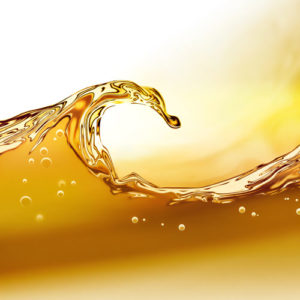By Josh Cosford, Contributing Editor
Environmentally Acceptable Lubricants, as far as the hydraulics industry is concerned, are fluids offering a reduced impact on the environment. EAL fluids are especially a concern for machinery operating on or around waterways, where the disastrous impact of potentially hazardous and toxic oil is most severe. Many environmental regulations require fluids to be EAL compliant, such as the 2013 VGP, a US regulation to prevent the discharge of toxic lubricants into US waterways.
 An EAL hydraulic fluid must meet three primary criteria — they must be biodegradable, not bioaccumulative and low toxicity. In addition, each additive to the fluid must also meet those three criteria, such as viscosity improvers, anti-wear chemicals, or detergents.
An EAL hydraulic fluid must meet three primary criteria — they must be biodegradable, not bioaccumulative and low toxicity. In addition, each additive to the fluid must also meet those three criteria, such as viscosity improvers, anti-wear chemicals, or detergents.
Biodegradability defines the capacity of a material to eventually break down into elemental components in the presence of microorganisms. If the base material is something bacteria like to eat, the material will likely break down into water, C02 and some minerals over time. Ideally, those remaining minerals would also be non-toxic. Unfortunately, in some cases, the base material may be manufactured from chemicals not suited for environmental protection, even if bacteria still enjoy it as a meal.
Furthermore, EAL fluids are likely constituted from more pure base oils. The most popular bio-oils are made from vegetable seed oil base-stock, which is naturally biodegradable and safe. Soy or canola stock is popular and inexpensive, relatively speaking, making them the non-toxic choice for EAL Fluids. That doesn’t mean synthetic fluids aren’t an option because paraffin-based oils also offer low toxicity.
Bioaccumulative is likely a new word to fluid power designers. It refers to how some chemicals may accumulate in the cells of organisms, which may pass those chemicals up the food chain, where they eventually become toxic. Even if the chemical is not initially toxic, such as cadmium or lead, years of accumulation result in harmful or fatal effects on the animals at the top of food chains. Imagine plankton that absorbs lead, sardines that eat plankton, herring that eat plankton, and then tuna eat the herring while accumulating the lead initially absorbed in the plankton.
Lubrication manufacturers commonly know bioaccumulative chemicals, so those additives are avoided for EAL fluids. However, to be an EAL certified fluid doesn’t mean your hydraulic oil comes shipped in a 200-gallon drum of rainbows. EAL fluid must contain at least 90% readily biodegradable base oil, up to 5% non-biodegradable compounds that are not bioaccumulative, and the remainder inherently biodegradable. Readily biodegradable compounds must return to within 60-100% of their natural state within 28 days, while inherently biodegradable compounds must do so within 20-60% of their natural state in the same period.
Although currently a requirement to waterways, I would expect that the future of all hydraulic fluids will reside within the EAL camp. Like all bio-oils, EAL lubricants are expensive compared to conventional mineral-based oils. When crude oil is no longer extracted from the Earth one day, we will rely entirely on renewable sources for all lubricants, making EAL fluids less expensive and more readily available.
Filed Under: Engineering Basics, Fluids, Sealing & Contamination Control Tips